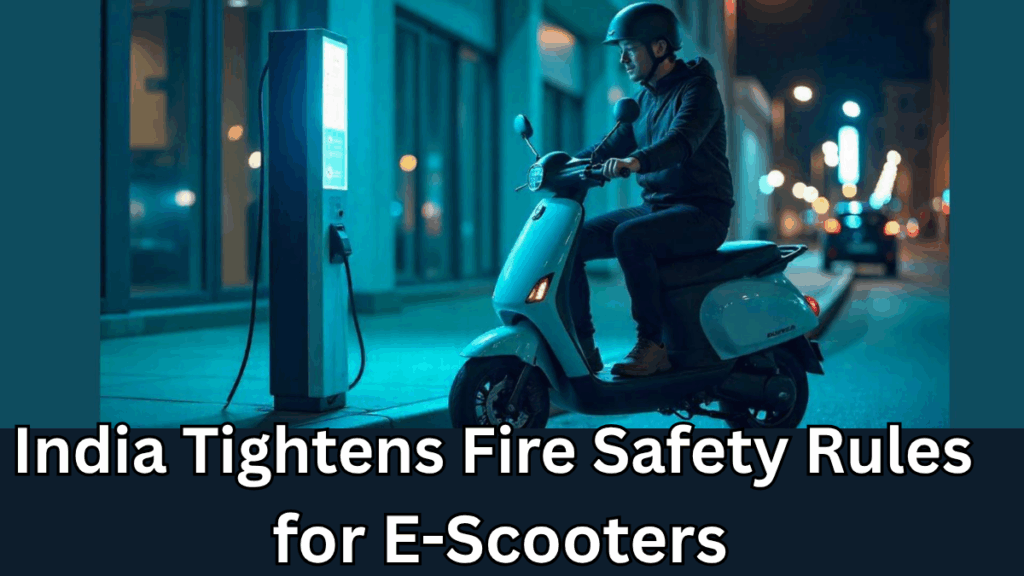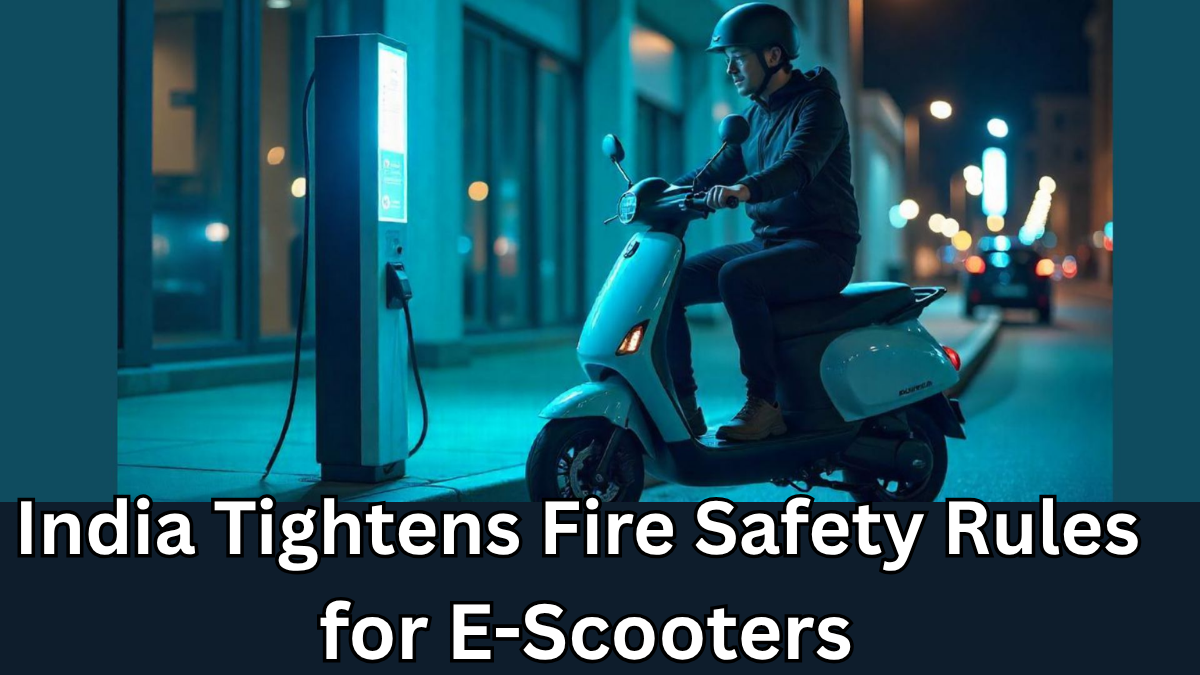As electric scooters become a common sight on Indian roads, their rising popularity brings along a critical concern—safety. With increasing reports of battery-related fires, the Indian government has decided to strengthen oversight. Starting in 2025, new India e-scooter fire safety regulations and BIS rules will be introduced to address these risks and enforce stricter battery test standards.

Table of Contents
Why the Change? Learning from Past Incidents

Several high-profile fire accidents involving e-scooters over the last few years prompted a government-led review. The result? A shift towards tighter safety rules.
Key triggers for the new rules:
-
Frequent incidents of battery overheating and fire
-
Substandard or poorly assembled battery cells
-
Inadequate safety testing protocols for EV components
What Are the New BIS Standards in 2025?
The Bureau of Indian Standards (BIS) is set to roll out updated safety requirements for electric vehicle batteries and associated systems.
Key BIS requirements include:
| Requirement | Details |
|---|---|
| Battery Testing | Mandatory tests for thermal, mechanical, and electrical endurance |
| Approved Cells Only | Only BIS-certified lithium-ion cells allowed in manufacturing |
| Advanced BMS Checks | Battery management systems must meet new performance criteria |
| Fire Resistance | Batteries must pass flame and heat resistance tests |
| Enforcement Timeline | All standards become mandatory from July 2025 |
These BIS rules are designed to bring Indian regulations in line with global EV safety norms.
What Does This Mean for the Industry?
For Manufacturers:
-
Immediate need to revamp product lines to meet updated battery test standards
-
Additional cost in testing, certifications, and supply chain upgrades
-
Greater pressure to innovate and ensure consistent quality
For Consumers:
-
Improved safety in everyday use
-
Slightly higher prices due to enhanced quality and certification costs
-
Increased confidence in e-scooter reliability
Long-Term Impact on India’s EV Market
The introduction of stricter India e-scooter fire safety regulations is a much-needed push to boost consumer trust in electric vehicles. Over time, it’s expected to:
-
Eliminate poorly built and unsafe e-scooter models from the market
-
Encourage manufacturers to invest in better technology
-
Increase the adoption rate of EVs in metro and tier-2 cities
FAQs
Q1. What are BIS rules in the context of e-scooters?
The BIS rules are safety standards issued by the Bureau of Indian Standards that will apply to battery design, fire resistance, and overall scooter safety starting in 2025.
Q2. What are the new battery test standards for e-scooters?
The new battery test standards include overcharging simulation, fire exposure testing, mechanical drop/shock tests, and thermal runaway checks.
Q3. Will e-scooters become more expensive due to these new regulations?
Yes, initially. Manufacturers may raise prices slightly to accommodate the cost of safer batteries and testing processes. However, it ensures better safety for consumers.
Q4. When will the new safety rules come into effect?
The updated India e-scooter fire safety regulation and BIS certification norms will be fully enforced starting July 2025.
Final Thoughts
India’s electric scooter revolution needs to be built on the foundation of safety and trust. The upcoming India e-scooter fire safety regulations, backed by stringent battery test standards and updated BIS rules, mark a big step in that direction. For both riders and the industry, these changes promise a safer and smarter EV future.
Click here to learn more







